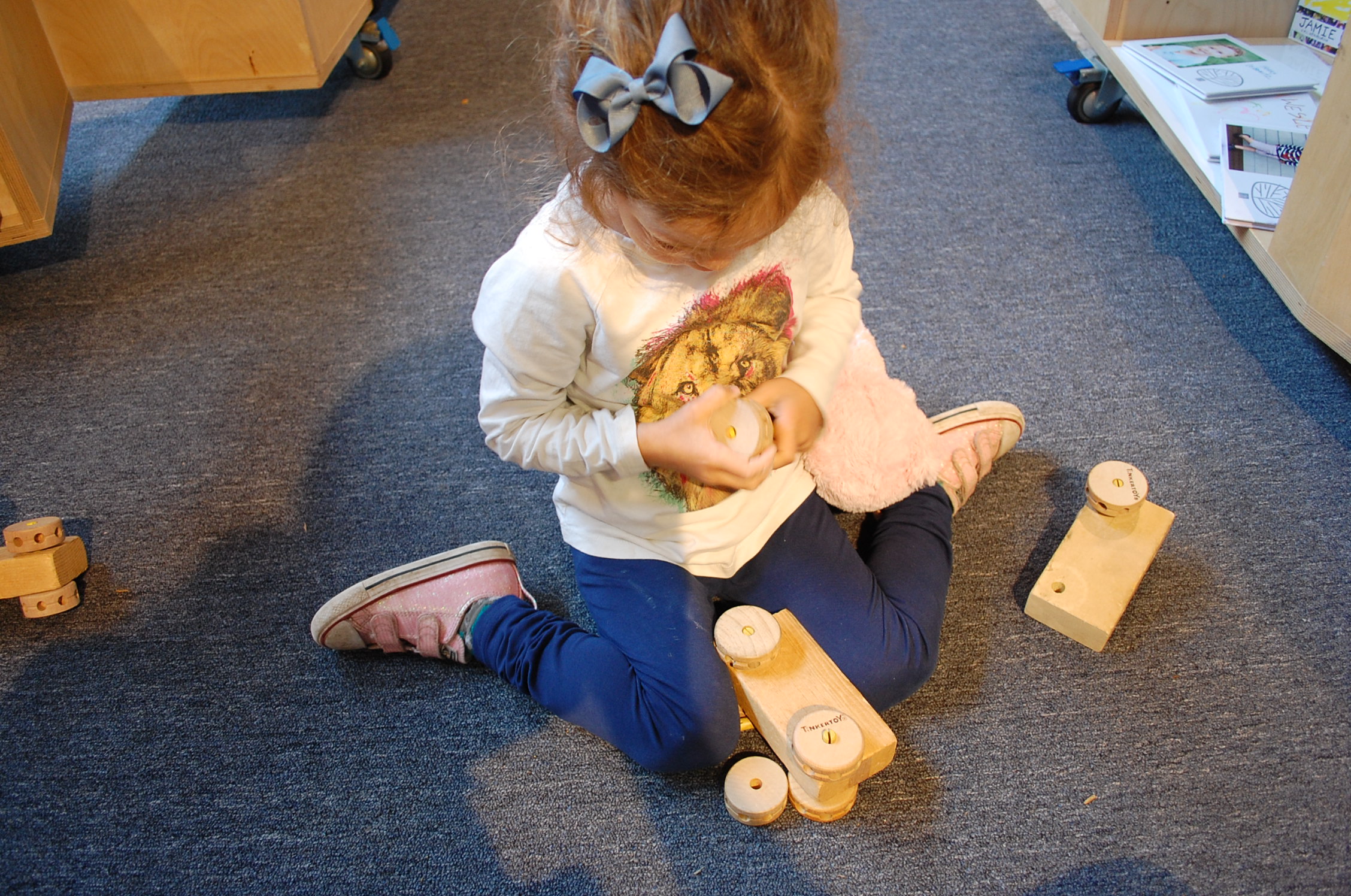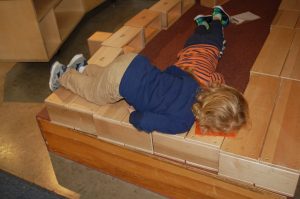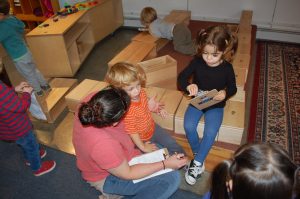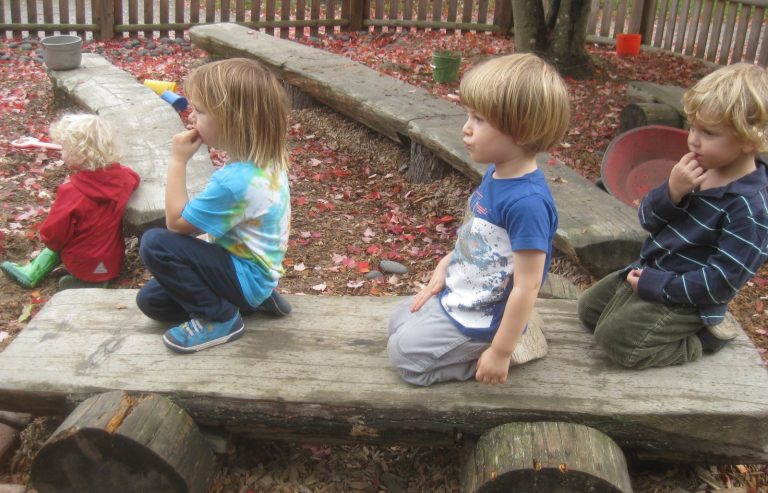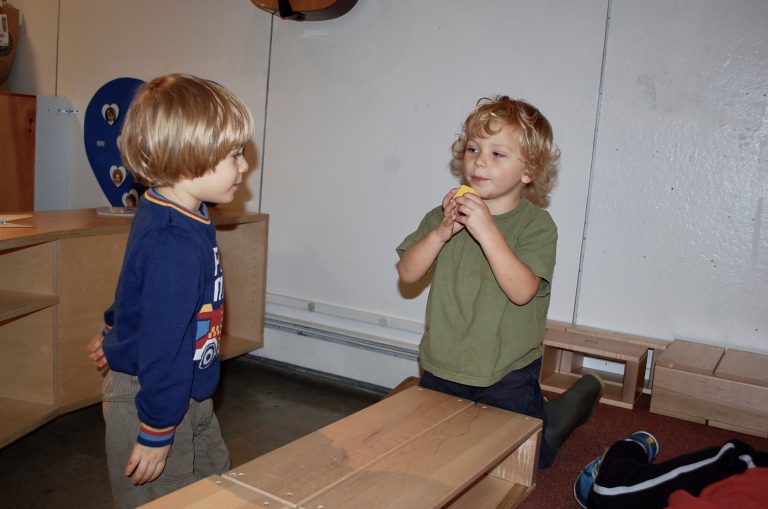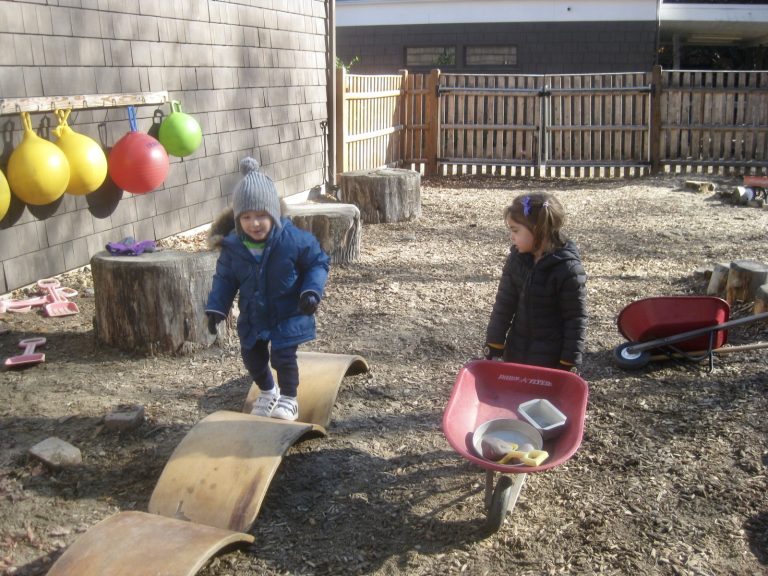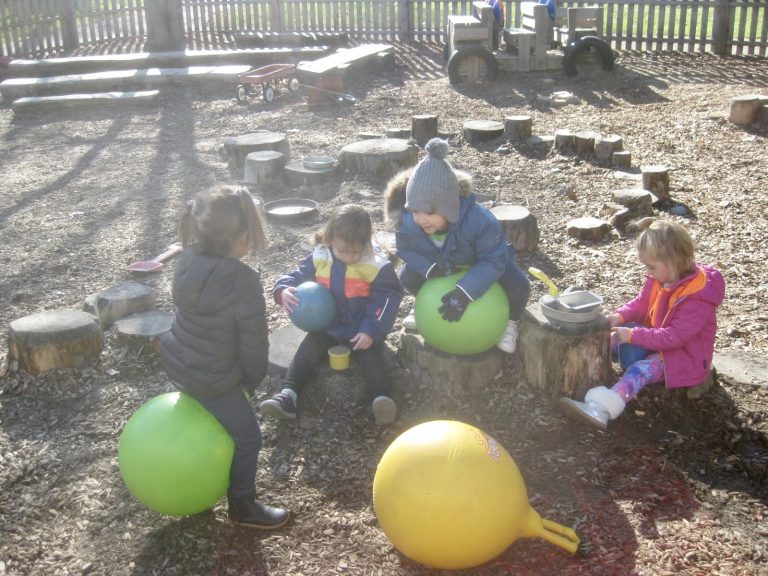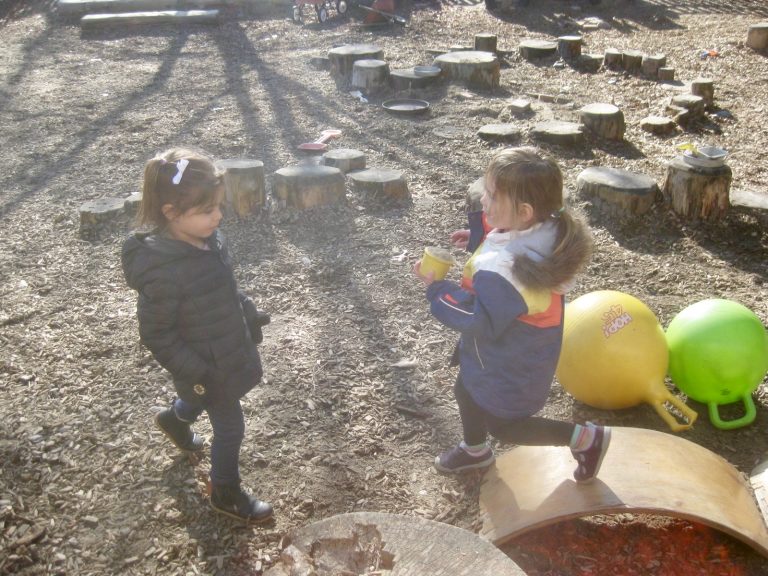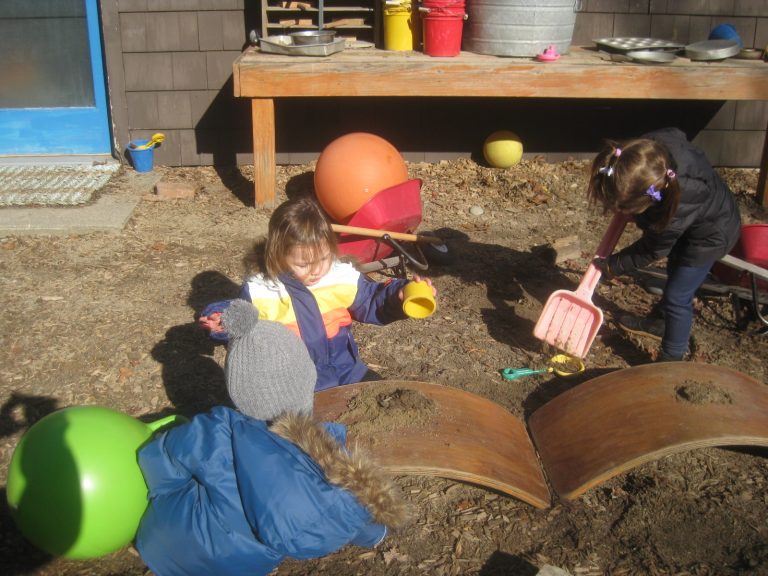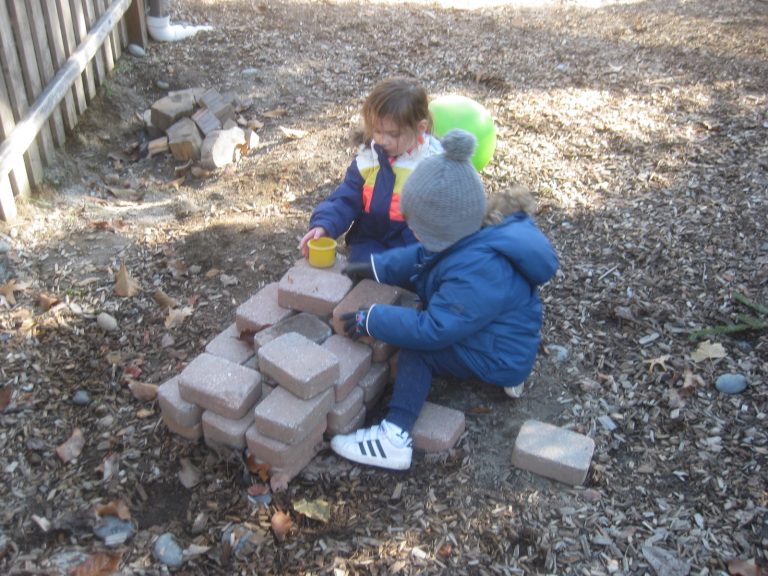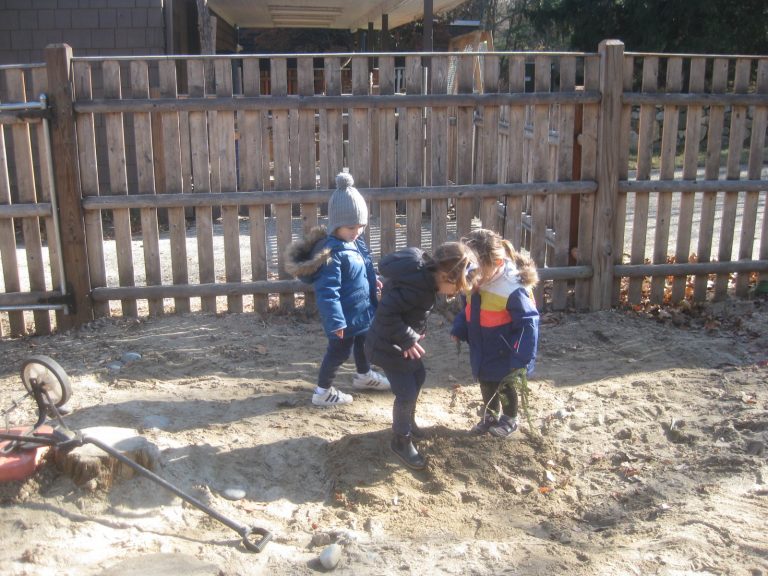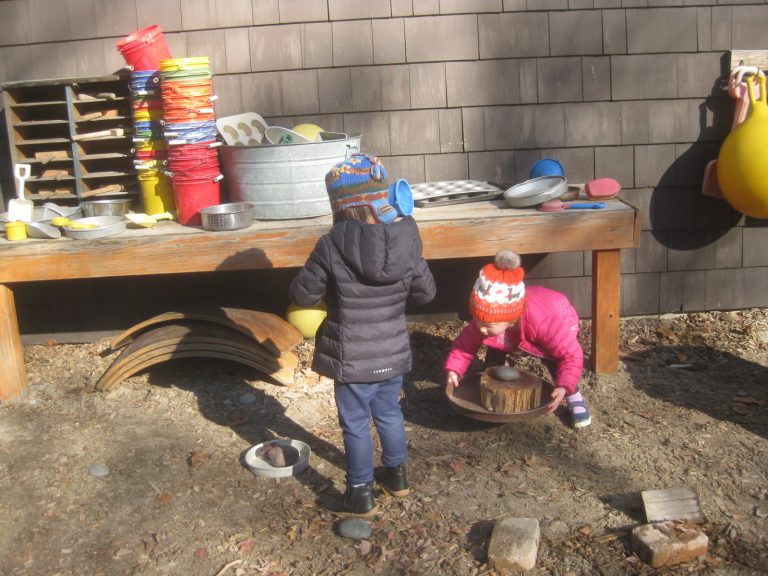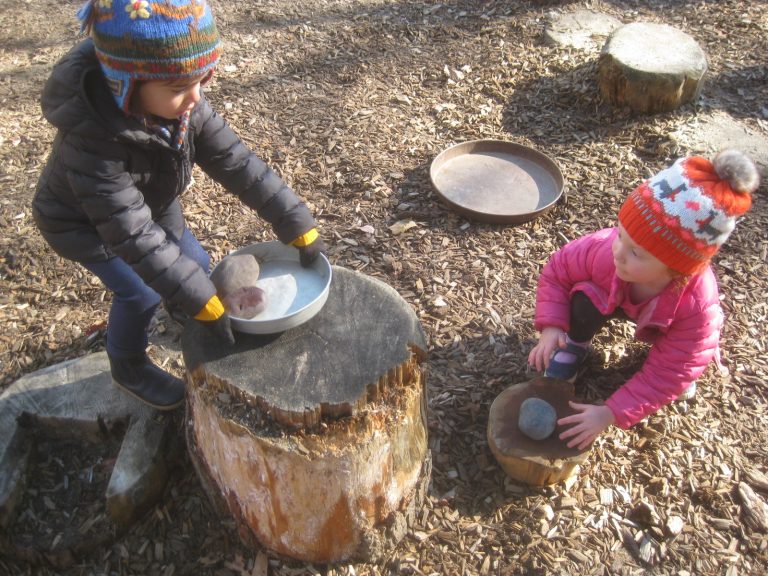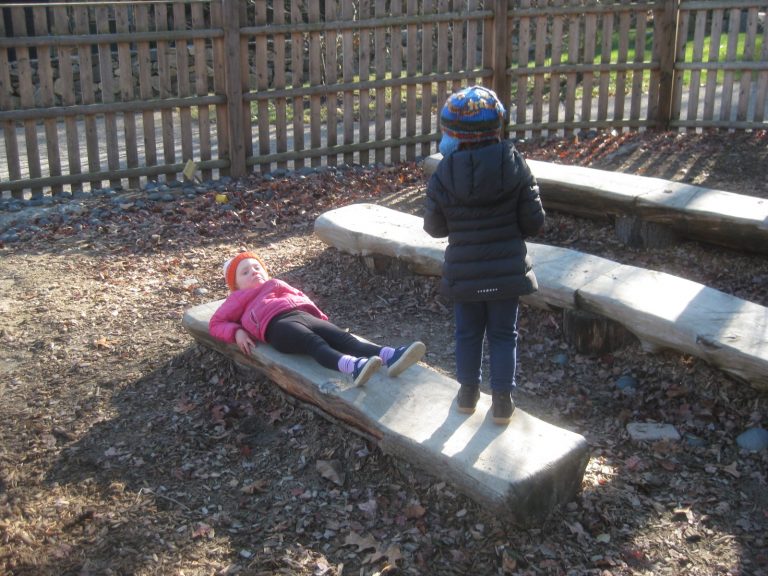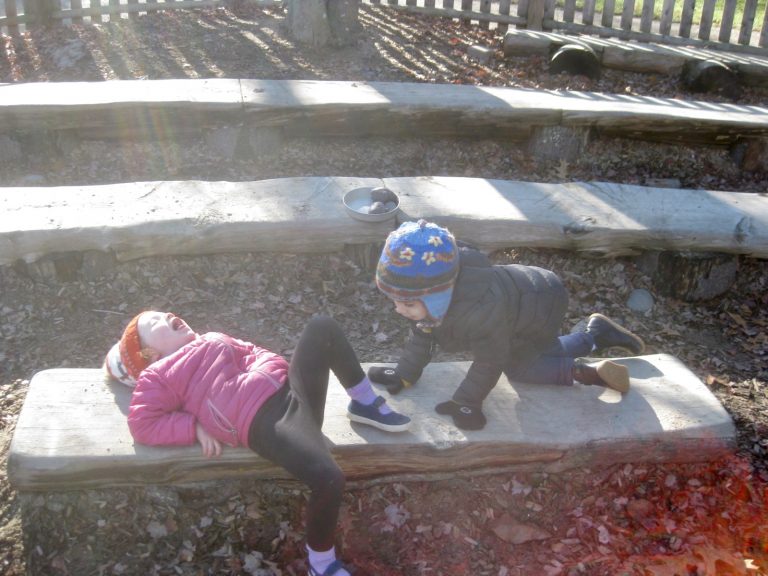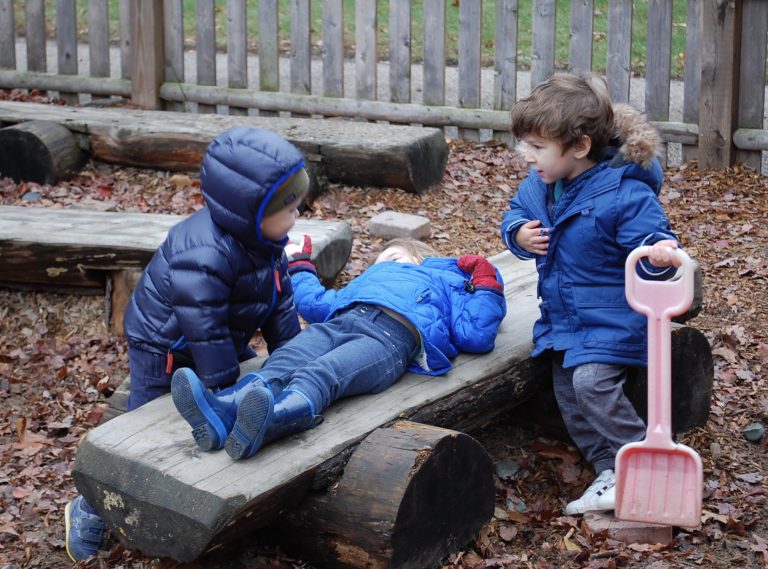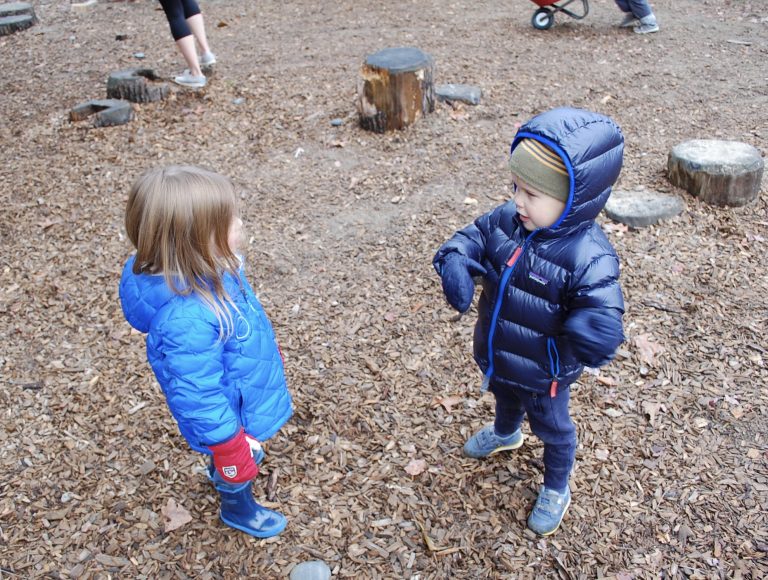Throughout the course of each year, social dynamics in every classroom constantly change. For some children, friendships are of little or no concern, for others it is their quest throughout preschool and beyond. Even the definition of “friend” is fluid, depending on the child. It may be an acquaintance, someone you talk to, someone you play beside, and/or someone you simply trust. Eventually, children become aware of that very loaded phrase: “best friend.” What does that mean, and does it dictate exclusivity? (Don’t get me started on “BFF”!)
In working with situations of exclusivity this year, we’ve used language like, “We’re all friends in Studio Blue,” and “friend power.” But though this was a step in the right direction, play still needed constant facilitation. We realized we weren’t addressing the root of the behavior. After much thought and conversation, we recognized that children were constantly giving us the message: “I AM IMPORTANT,” not “We are important.” Each child’s individuality, each child’s ME, must be validated and honored before s/he can move onto “WE.”
Thomas and Travers have had a close relationship since the beginning of school, when they began building boats on the stage out of the large blocks.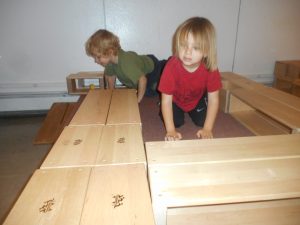
As the weeks passed, the play shifted to tiger play, and constructing cages with gates – literally building walls and making sure to lock the gate to protect their physical space in the room, metaphorically protecting their friendship. Travers and Thomas began to see this area as theirs and claimed ownership of it, objecting if another child played there or used the large blocks.
So we changed strategies: “You are good friends. You really like to be together.” We confirmed and honored their friendship and their desire to protect it. Proactively, before anybody felt threatened, when Thomas and Travers would build a cage, we explained that the cage’s gate was not a locking gate, but would be opened to let more people in. When a new playmate arrived, we immediately defined spots: “Thomas, where is your spot to sleep?” (making sure that all involved could hear:) “This is Thomas’ spot.” “Travers, where is your spot?…” Then we’d address the new child: “Where would you like your spot to be? It can’t be here (Travers’ spot) and it can’t be here (Thomas’ spot) but we can make you a spot in an available place.” Thomas and Travers responded positively to this, even helping the new friend make their spot, knowing their own spot was safe and would be protected. With repetition and adult facilitation, they heard and felt that their spot was important. We could not become a we until we felt secure in the safety and importance of me. We saw their play shift again, from tigers to puppies.
Upon reflection, we find that children have been making their own spots (and acknowledging that others need their own spots) in various ways both inside and outside the classroom: putting out felt squares as meeting time rugs, claiming a tube in the sculpture park, and finding their own or each others’ photos on the Studio Blue face page… What children know and express intuitively is not always obvious to adults!
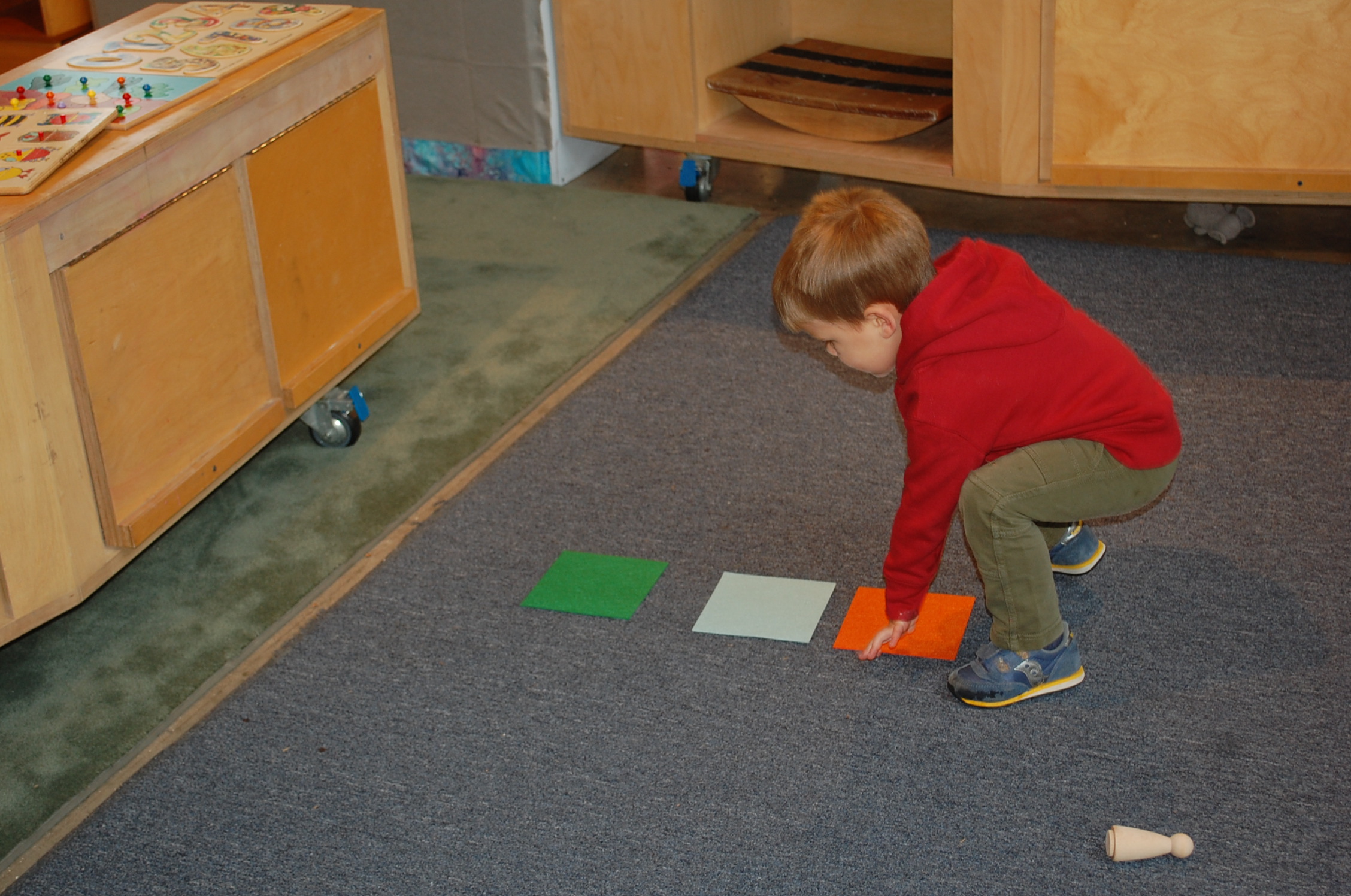
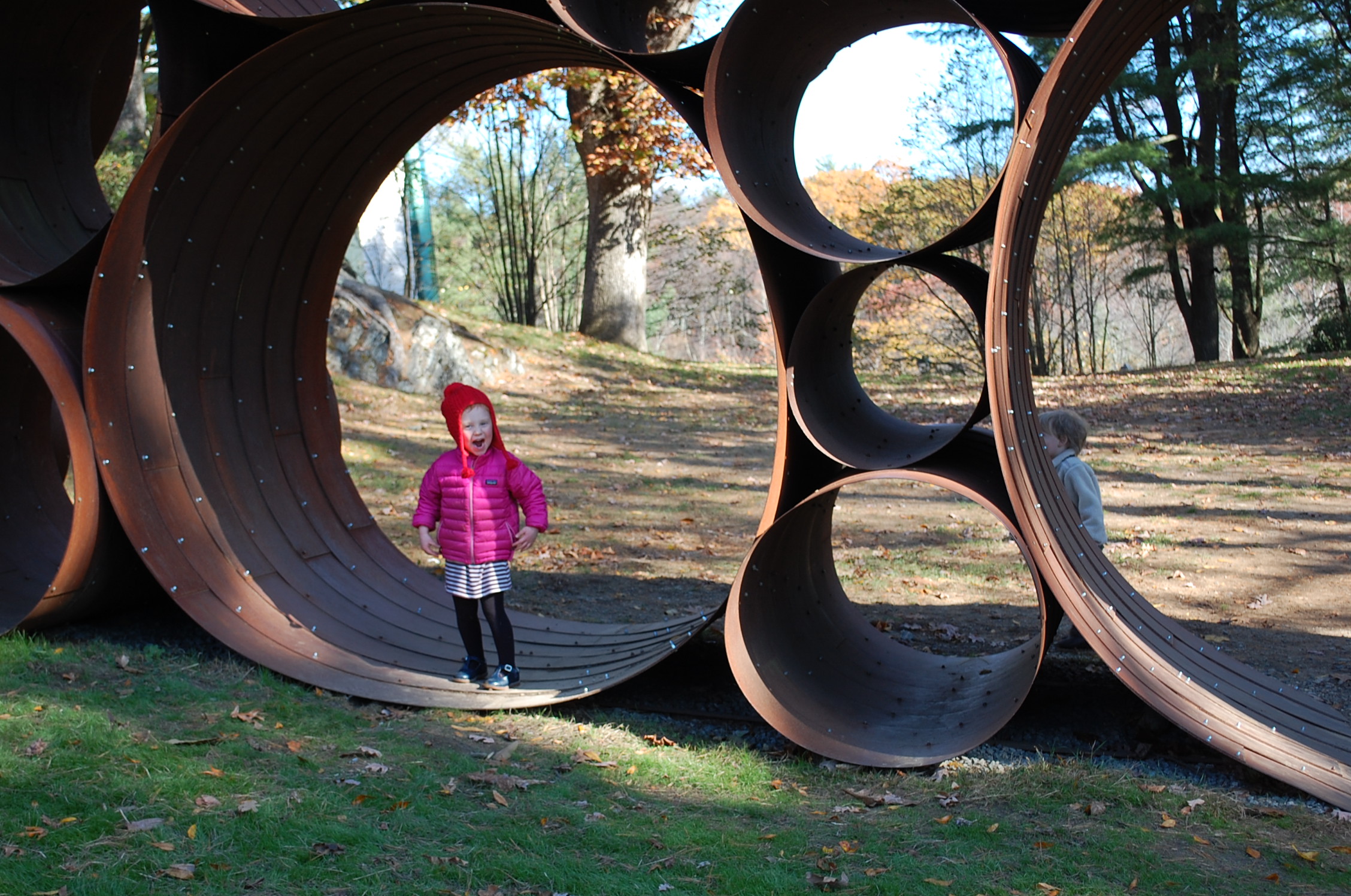
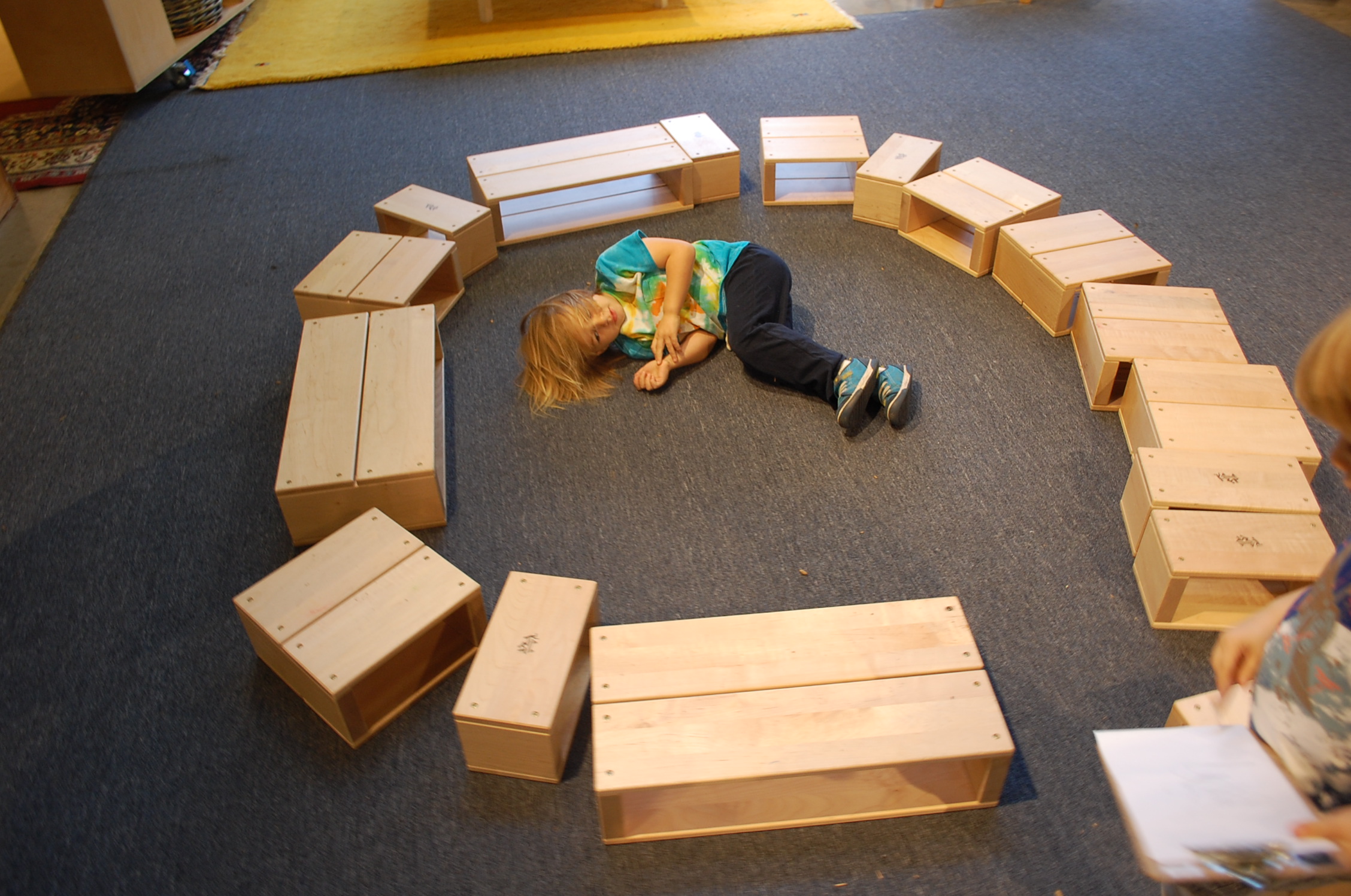
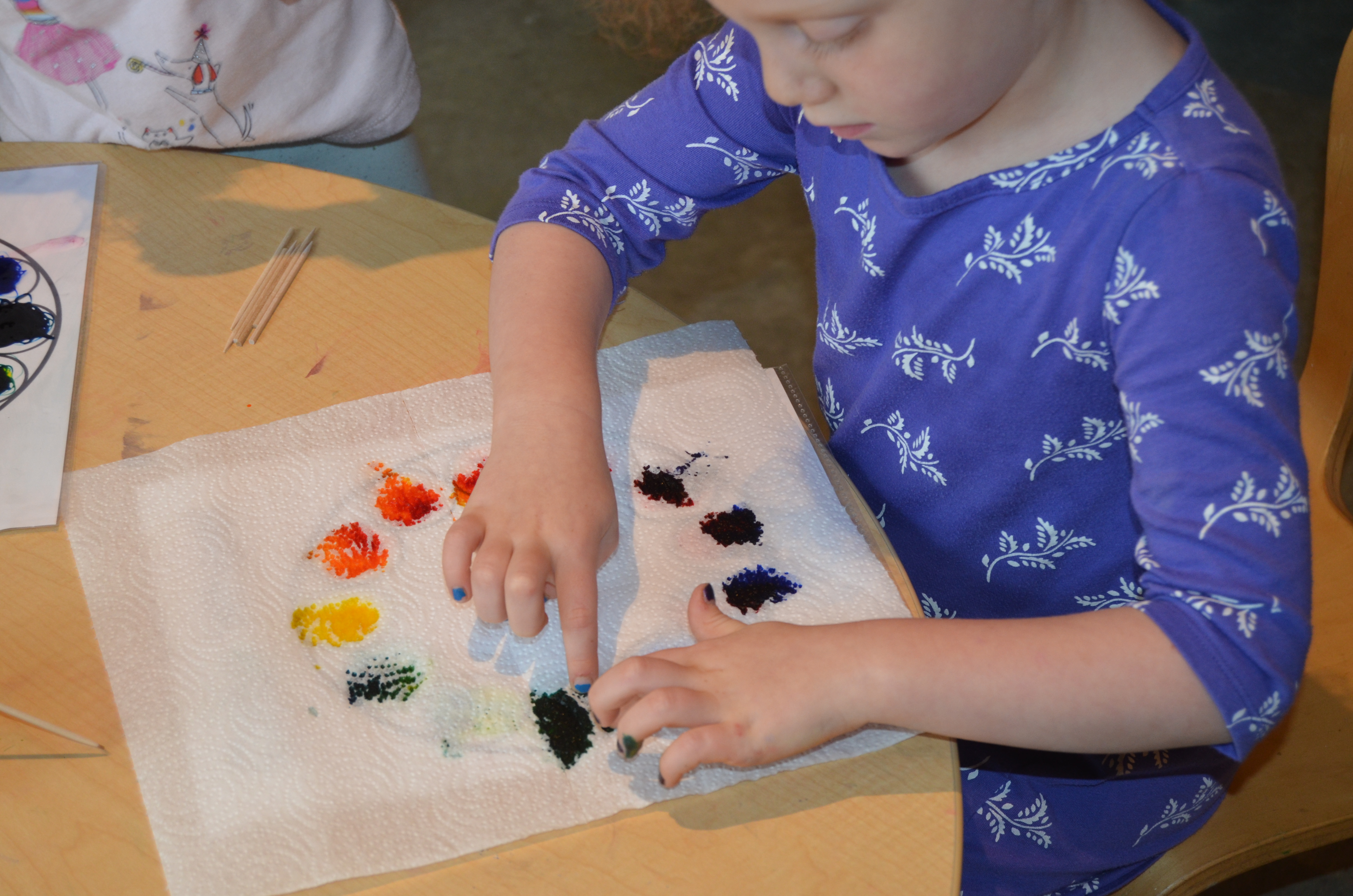
Gates have begun opening and children are inviting each other in. Travers makes room for Saige at meeting: “Saige– Saige, I have…” he said, patting the floor beside him and moving over to create a spot for her, and Saige is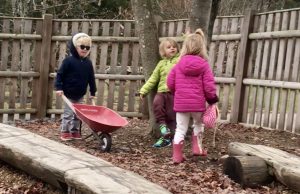 happy to join him. Kaya notices and pats the floor beside him, too, “Here’s a spot.” When a child is hurt, Thomas comes over to give a gentle kiss.
happy to join him. Kaya notices and pats the floor beside him, too, “Here’s a spot.” When a child is hurt, Thomas comes over to give a gentle kiss.
After snack, Travers and Cal careen around with their wheelbarrows, putting out fires, while Thomas and Kaya join in play together elsewhere. Later on, Saige joins Travers in play.
The following day (Wednesday, this week), Sam and Will create this long line of blocks, enjoyed by and shared with Thomas and Travers, and later, Kyla, Asha and Caroline.

